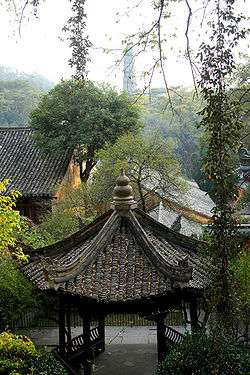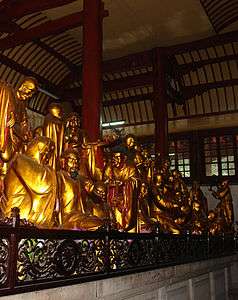Guoqing Temple

The Guoqing Temple (simplified Chinese: 国清寺; traditional Chinese: 國清寺; pinyin: Guóqīng sì; Wade–Giles: Kuoch'ing Szu) is a Buddhist temple on Mount Tiantai, Zhejiang Province, People's Republic of China. Originally built in 598 AD during the Sui Dynasty, and renovated during the reign of the Qing Yongzheng Emperor (r. 1722–1735 AD), the temple is located roughly 220 kilometres (140 mi) from the city of Hangzhou. It was the initial site for the creation of the Tiantai school of Mahayana Buddhism, founded by Zhiyi (538–597 AD). The temple covers an area of some 23,000 m2 (250,000 sq ft) and features 600 rooms in a total of 14 different halls, including the Grand Hall of Sakyamuni, the Hall of Five Hundred Arhats and the Hall of Monk Jigong. The exterior of the building features Chinese pagodas such as the Sui Pagoda, the Seven Buddha Pagoda, and the Memorial Pagoda of Monk Yi Xing (683–727 AD).
Significance
This mountain temple is the site where indigenous Chinese Buddhism branched away from Buddhist teachings and doctrine commonly found in India. From there, the Tiantai sect of Buddhism spread to both Korea and Japan during the Tang Dynasty (618–907 AD). The tall brick Guoqing Pagoda built at the temple in the year 597 AD is still standing,[1] making it one of the oldest surviving brick pagodas in China (after the 40 metres (130 ft) tall Chinese Songyue Pagoda built in 523 AD).
Gallery
See also
References
- ↑ Steinhardt, 433.
Further reading
- Steinhardt, Nancy Shatzman. "The Tangut Royal Tombs near Yinchuan," Muqarnas: An Annual on Islamic Art and Architecture (Volume X, 1993): 369-381.
External links
| Wikimedia Commons has media related to Guoqing Temple. |
Coordinates: 29°10′44″N 121°02′32″E / 29.178843°N 121.042213°E



